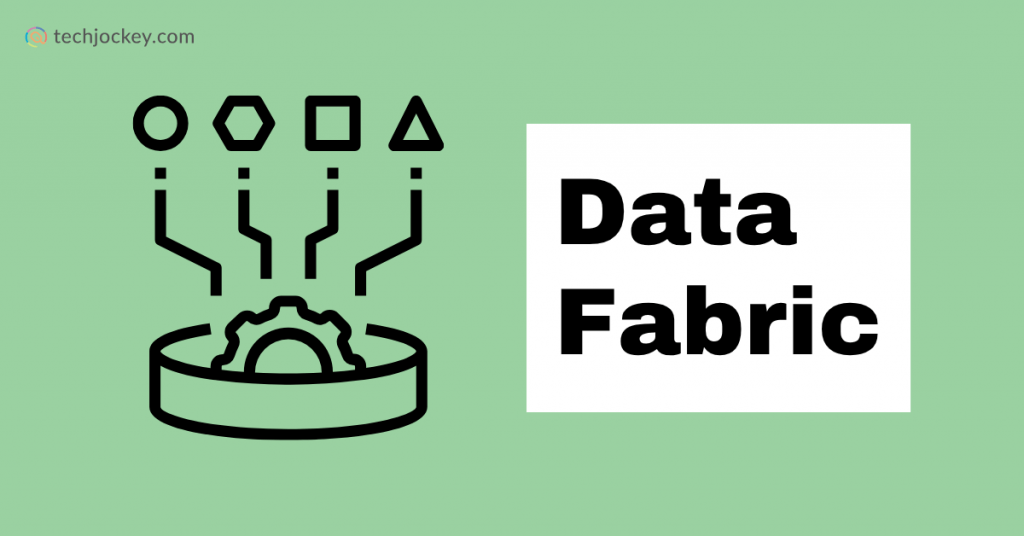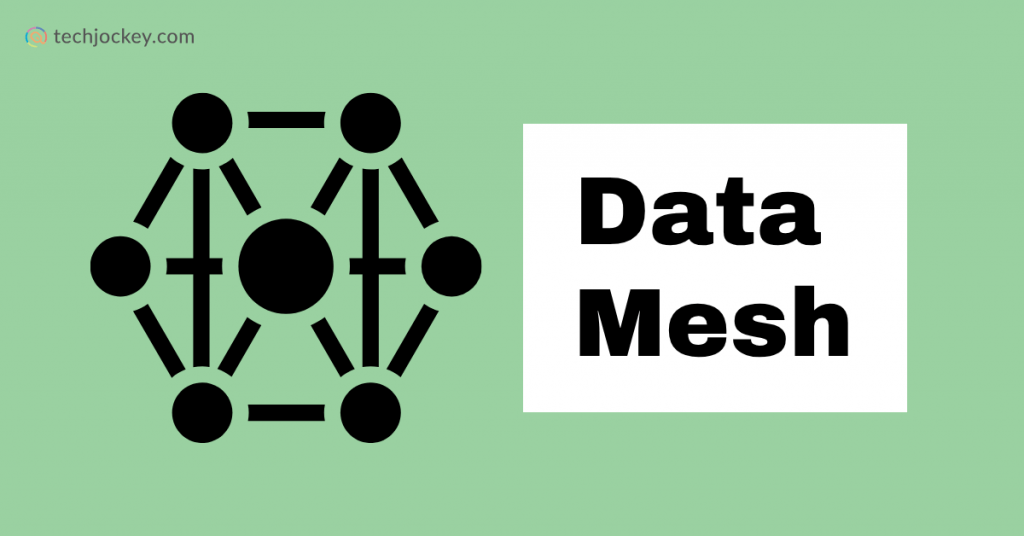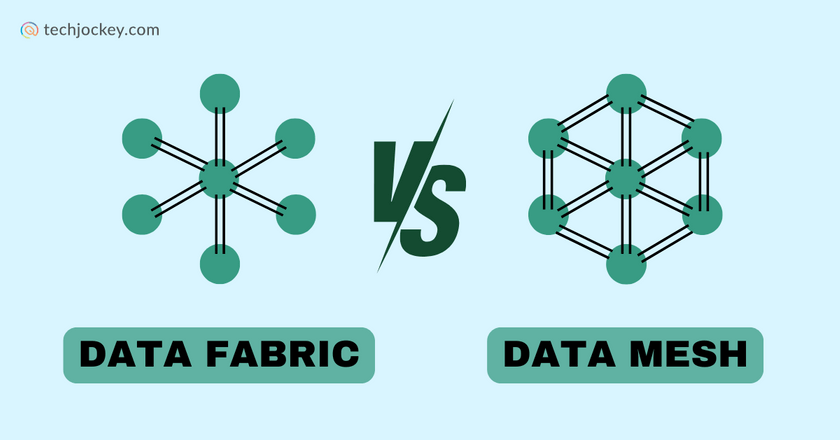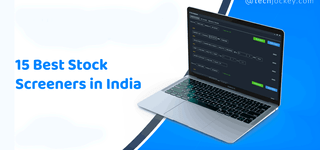Businesses nowadays are dealing with data everywhere, piling up in various teams, tools, and platforms. However, older centralized systems fail to keep up. They are very slow, can hardly scale, and complicate the process of making smart decisions using available data.
Excessive complexity of data, silos within teams, and confusion due to the multiplicity of similar data are common issues encountered in many companies. Such problems hinder any development and prevent companies to be completely data-driven.
Data fabric and data mesh are new solutions that emerged to address this. The purpose of both is to help data become simpler to handle, quicker to retrieve, and more beneficial to the enterprise.
These two methods have been crucial terms to discuss within the broader umbrella of data management software, which is fastly evolving to support distributed, automated, and intelligent data ecosystems.
In this blog, we are going to know the meaning of data fabric and data mesh, their difference, use cases, and which one a business can choose?
What is Data Fabric?

In very simple words, the data fabric’s meaning is a smart layer that connects all your data, no matter where it is stored. It is to make data accessible in a more efficient way.
Like a digital fabric, weaving together data from different systems, apps, or locations (cloud, on-premise, etc.), and gathering all in one place.
It uses technologies such as metadata management, AI/ML, and APIs to streamline the way data is integrated.

Sap Agile Data Preparation
Starting Price
Price on Request
What is Data Fabric Architecture?
Metadata-driven automation lies at the core of data fabric architecture. It uses metadata to find out the data location and make it accessible safely.
Here are the components of data fabric architecture:
- Metadata management: It’s called the brain of data fabric, which enables automated data discovery, classification, and cataloging.
- Data integration layer: It connects all the data present at different sources using APIs, data virtualization, and ETL/ELT pipelines.
- AI/ML engine: It gives smart recommendations on how to use and govern data and detect any anomalies.
- Security and governance layer: As the name suggests, it applies global policies for data access, quality, and lineage across systems.
Data fabric architecture helps the teams to access real-time data and even scale data analytics without the need to move or recreate data infrastructure. It’s especially useful in environments where data is scattered but needs to feel centralized.

Microsoft Fabric
Starting Price
Price on Request
What is Data Mesh?

Data mesh is a concept that involves managing all the data individually by different teams, like HR, marketing, or sales, in a business.
This assists large organizations in accelerating the process, avoiding bottlenecks, and better utilizing their company data across various departments.
What is Data Mesh Architecture?
Data mesh architecture is designed around the principles of decentralization and domain-oriented design. It promotes the idea of managing all the data by all teams individually.
Core elements of the architecture include:
- Domain-based ownership: Every team, say HR, sales, marketing, and accounts, has to be responsible for its own data, pipelines, and quality.
- Data as a product: Teams not only have to take ownership but also have to ensure that the data is discoverable, usable, and reliable.
- Self-serve data infrastructure: There’s a common set of tools and platforms that allow separate associations’ teams to create, test, and put into action data solutions on their own.
- Federated governance: There’s a balance between local flexibility and centralization, and common standards of compliance, interoperability, and security.
Data mesh architecture is mainly useful in large firms where the teams have to deal with large datasets, and that too at a faster speed.

Snowflake
Starting Price
$ 2.20
Data Fabric vs Data Mesh – Key Differences
While talking about Data fabric vs data mesh, the concepts are both related to managing and sharing data in a way that leads to smarter decisions. However, they work slightly differently. Here’s the difference between data mesh and data fabric, explained in a tabular format for clear understanding.
| Feature | Data Fabric | Data Mesh |
|---|---|---|
| Main Approach | Centralized | Decentralized |
| Who Manages the Data? | Central data team or platform | Individual teams |
| Core Idea Behind? | Connect all data systems using smart tools and automation | Treat data like a product, owned and managed by domain experts |
| What Technology is used? | Heavy use of AI, automation, and metadata | Focus on people, processes, and organizational change |
| How is Data Shared? | Automatically connects and governs data across systems | Teams create, maintain, and share their own data sets |
| Governance | Handled centrally using rules and automation | Each team is responsible for governance and data quality |
| How Data Products Are Created? | Suggested and delivered using tools and metadata (like a knowledge graph) | Manually created and managed by domain teams |
| Best For | Companies needing seamless, tech-driven access to scattered data | Organizations wanting to empower teams and avoid bottlenecks |
| Can They Work Together? | Yes, data fabric can support data mesh by automating repetitive tasks | Yes, data mesh benefits from data fabric’s smart tools and governance support |
Benefits of Data Fabric
- Integrated access to data: Data fabric brings together on-premises, cloud-based, and hybrid data in one place. It helps deliver information anywhere in the enterprise.
- Quicker knowledge: The AI-based automation can help users in more efficient search and use the data, improving self-service analytics.
- Reduced management workload: It automates important data activities such as data integration, quality assurance, and lifecycle management, balancing manual input and operational cost.
- Real-time decision-making: It maximizes data flow and provides simple real-time analytics to make business strategies more responsive.
Benefits of Data Mesh
- Shared ownership of data: The data is owned by the domain teams, thus having less reliance on a central data team.
- Quicker data delivery: The domain-specific pipelines increase the availability of data and decrease the processing time lag.
- Agile and scalable: It facilitates the data as a product, which is agile and scales both between teams and applications.
- Better governance: Federated governance provides both secure, auditable access and flexibility in the domains.
- Cloud-Friendly, cost-effective: Infrastructure solutions are cloud-friendly and can support pay-as-you-go cloud infrastructure, real-time streaming, and enhance efficiency.
- More efficient data democratization: It enables even less technical users, not just business users, to investigate, analyze, and utilize their own data.

Azure Databricks
Starting Price
Price on Request
Challenges with Implementing Each Approach
Both data fabric and data mesh offer powerful ways to manage modern data environments, but neither is plug-and-play. Each comes with its own set of challenges.
Challenges with Data Fabric
- Heavy initial cost: An initial cost to establish the intelligent metadata layer, automation tools, and integration systems is expensive.
- Complex implementation: Hard technical prerequisite complex set of mechanisms – cloud-based infrastructure and APIs, AIML power.
- Over-dependence on automation: Sometimes, with automation, there could be low-quality metadata, or improperly configured automation may give inaccurate data or transparency lapses.
Challenges with Data Mesh
- Organization and cultural change: Data mesh is not only a technical transformation; it demands significant data management changes in teams as they gain ownership of their data.
- Poor quality uniformity: Having decentralized teams design data products means that quality, format, and governance may be difficult to enforce without effective coordination.
- Skills and maturity: Not every team possesses the skills in data engineering and the maturity to manage their pipelines and governance.
Data Fabric vs Data Mesh: Which One for Your Business?
When it comes to the choice between data fabric and data mesh, there is no silver bullet. It should be the right option depending on how your organization processes data, the data stage you are in, and the problem you are solving for.
Start by assessing your company’s structure. Are your teams already working in silos with strong domain expertise?
A data mesh can be more natural to them, where they get to own and control their own data pipelines.
However, if your organization requires strict adherence, central governance enforcement, or real-time integration within systems, a data fabric could give you the consistency and control that it requires.
Consider your data maturity. An enterprise having great experience in cloud, metadata systems, and AI would be in a good position to adopt data fabric.
If your teams are open to sharing data responsibilities but still learning the technical side, it’s better to start small with data mesh – try it in one or two areas first.
Think about your priorities. Do you need to speed up insights across teams? Reduce reliance on IT? Improve data quality across sources?
Ultimately, the perfect solution may not be deciding between data mesh vs data fabric, but the hybridization of both approaches. It could be perfect to build a dynamic, extendable, and human data platform.

Boomi AI
Starting Price
Price on Request
Conclusion
Data fabric and data mesh offer modern ways to manage and use data across complex systems.
Choose data fabric if you want centralized control, automation, and easy integration. Go for data mesh if you prefer scalable, domain-led innovation with shared ownership.
Many companies now combine both using data fabric for the tech and data mesh for the team structure.
The right choice: data fabric vs data mesh? Well, it depends on your company’s size, culture, and data readiness. Start small, test, and build what fits best.
Mehlika Bathla is a passionate content writer who turns complex tech ideas into simple words. For over 4 years in the tech industry, she has crafted helpful content like technical documentation, user guides, UX content, website content, social media copies, and SEO-driven blogs. She is highly skilled in... Read more




























